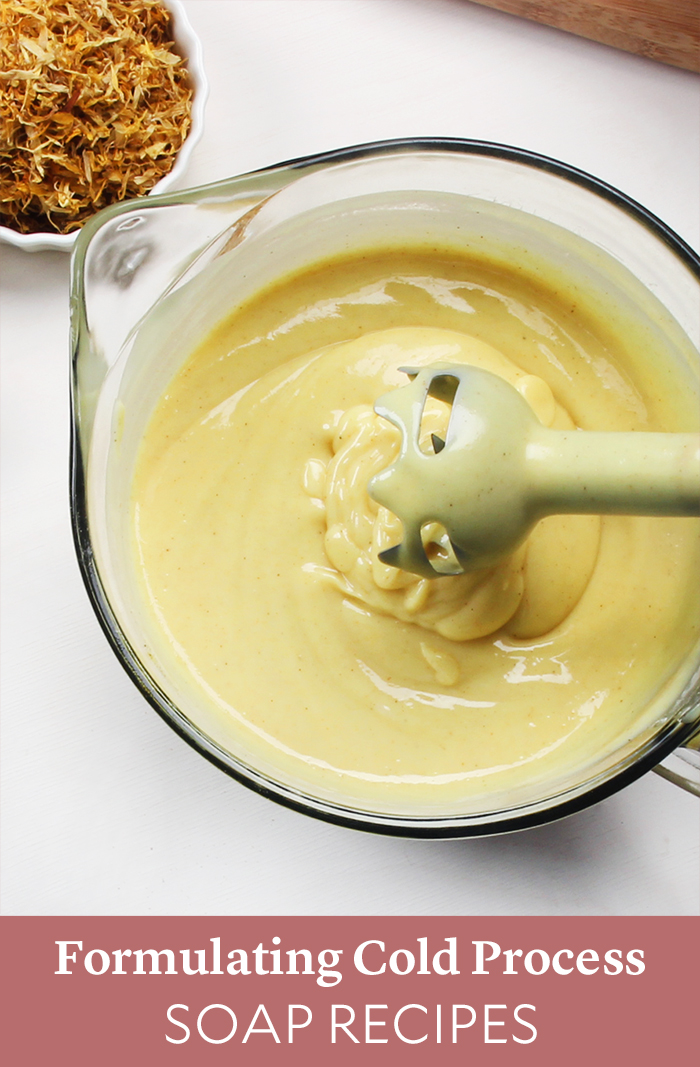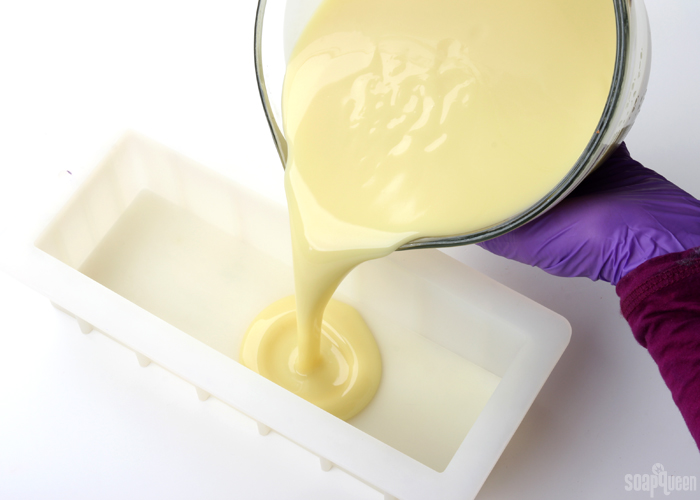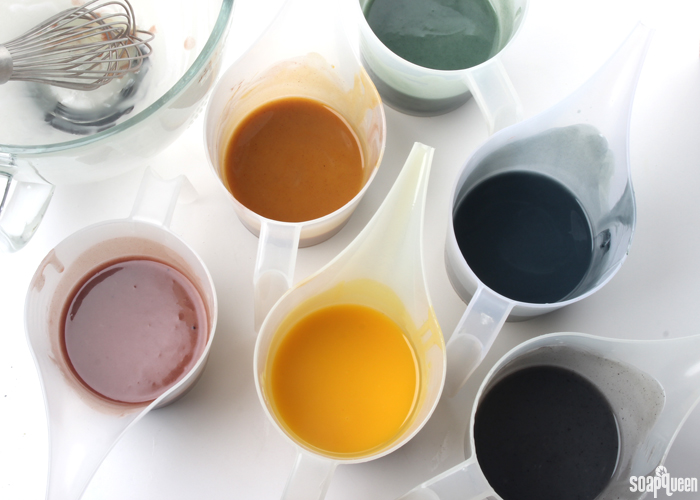
There are a few factors to consider before formulating cold process soap recipes. From the Common Soapmaking Oils post to the Back to Basics Series, we've got plenty of resources to help you get started.
You can never go wrong with a 34/33/33 ratio. That's 34% olive oil, 33% coconut oil, and 33% palm oil. They're commonly used because they complement each other well. Palm oil acts as a secondary lathering agent and hardens the soap, coconut oil is cleansing and produces big bubbles, and olive oil is moisturizing and gives bars a silky feeling. If you don’t want to use palm oil, learn more about alternatives here.

Another standard recipe is the 30/30/30/10. That's 30% olive oil, 30% coconut oil, 30% palm oil, and 10% of something special – rice bran oil, sweet almond oil, shea butter, or mango butter are all good options. The additional oils and butters each add a unique feeling to the recipe.
To create your own recipe, start by choosing your base oils. You can use each one around 20-30%. For the remaining portion, consider what you'd like the bar to feel like. Do you want it to be super moisturizing, have a nice thick lather, or to be hard and long lasting? Then, check out Common Soapmaking Oils. It lists the properties and usage rates of the oils so you can choose the right one for your recipe.

There are a few general rules that make formulating recipes easier.
- Oils that are liquid at room temperature tend to trace more slowly. A high percentage in your recipe is great for intricate designs. The soap will take longer to harden in the mold and it will feel softer than a recipe with a high percentage of hard oils.
- Hard oils – the ones that are solid at room temperature – trace more quickly. The soap will unmold faster and the bars will feel firmer than a recipe with a lot of liquid oil.
- Any soap can be made with just one oil, but the only ones we recommend using up to 100% are olive oil or coconut oil. The others can feel too sticky, too hard, etc. Learn more in the Single Oil Cold Process Soap Lather Tests. Most recipes are a combination of hard and soft oils.
- If you want to create hard bars without palm oil, check out Palm Oil Alternatives in Cold Process Soap.
- You can substitute oils in your cold process recipe. For instance, canola or rice bran can be used in place of olive oil. Learn more in the Substituting Oils post.

While we do our best to formulate a recipe so we can predict exactly how it will behave, there are an unlimited number of variables that can lead to unexpected results. The best way to find out what works for you is to experiment. Start with these rules and then adjust based on your personal preferences.
Here are a few tried-and-true recipes we love. They’re superfatted at 5%.
Old Faithful
This one is simple and reliable, so it's great for beginners. The castor oil gives it a luscious lather. The recipe is similar to our Lots of Lather Quick Mix.
Old Faithful with a Twist
This is a fairly standard recipe with a few moisturizing extras like sweet almond oil and mango butter. Shea butter in place of mango feels lovely as well.
25% Coconut Oil
25% Palm Oil
30% Olive Oil
15% Sweet Almond Oil
5% Mango Butter
Perfectly Palm Free
This is a wonderfully slow-moving recipe that's great for intricate designs.
15% Coconut Oil
30% Canola Oil
25% Rice Bran Oil
15% Shea Butter
10% Avocado Oil
5% Chia Seed Oil
Beautiful Swirls
This option is great for more than just swirls – you can use it for other intricate designs like layers and embeds. It's similar to the Swirl Quick Mix.
20% Coconut Oil
30% Palm Oil
20% Canola Oil
4% Castor Oil
6% Hazelnut Oil
10% Rice Bran Oil
10% Sunflower Oil
This post was updated in November 2018.
The post Formulating Cold Process Soap Recipes appeared first on Soap Queen.






Keine Kommentare:
Kommentar veröffentlichen